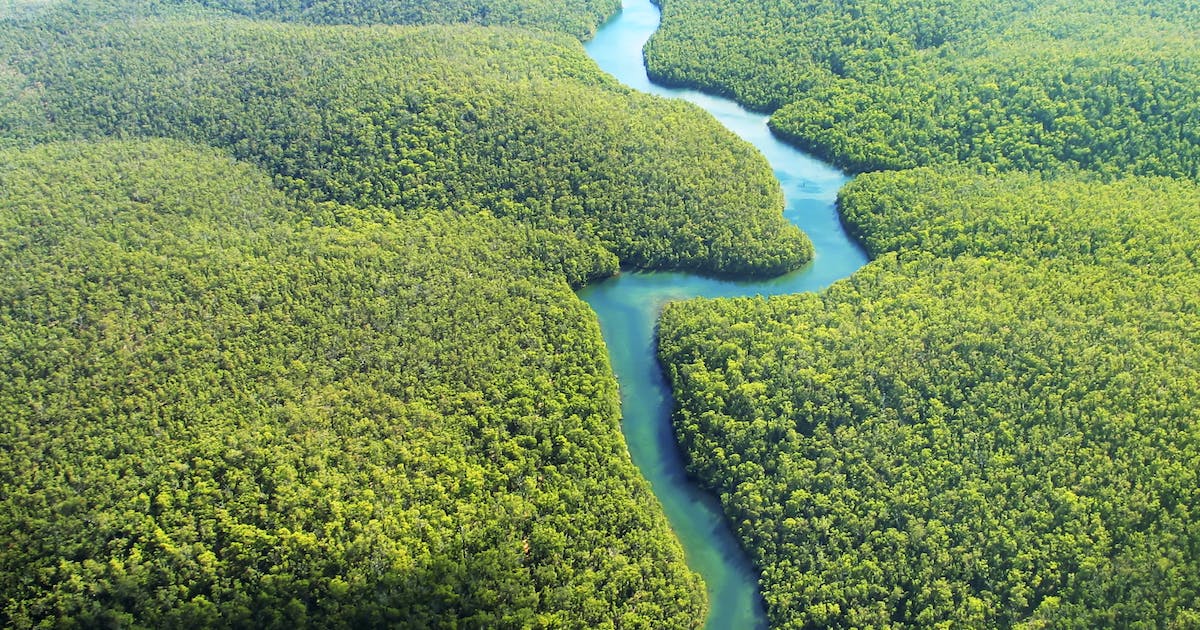After weeks of negotiations, the United Nations climate talks, known as COP27, wrapped up nearly two days past deadline — striking a last-minute, historic agreement on this session’s most anticipated issue: payments for climate change damages to developing countries.
Developed nations agreed to create a fund to compensate poorer nations for catastrophic consequences of climate change. Yet critical components – including which countries will provide financing, and which will benefit – are being pushed to future negotiations.
Countries also reaffirmed the urgency of the Paris Agreement’s goal of keeping global temperature rise to 1.5 degrees Celsius, however that will require ambitious action at home to reduce the use of fossil fuels and conserve high carbon ecosystems.
“The world’s forests, oceans and other ecosystems are key to preventing the worst effects of a warming planet,” said Lina Barrera, vice president for International Policy at Conservation International. “At COP27 we saw governments recognize the vital importance of natural ‘carbon sponges’ to the climate fight.”
Here are some announcements you may have missed from the U.N. climate talks.
Supporting Indigenous-led conservation
Indigenous groups live in and manage more than a quarter of the Amazon basin. Research has found that their stewardship helps slow deforestation in the world’s largest rainforest, which stores vast amounts of planet-heating carbon and supports unparalleled biodiversity.
Last week at COP27, Indigenous-led conservation in the Amazon received a boost from the French government, which pledged $7.2 million for Our Future Forests-Amazonia Verde — a program led by Conservation International and COICA, a collective of Indigenous organizations in the Amazon basin.
“Protecting and conserving the Amazon is a global priority that would not be possible without the fundamental knowledge and the co-implementation of Indigenous communities,” said Mauricio Bianco, vice president of Conservation International-Brazil.
The program, which now enters its second phase, aims to conserve up to 12 percent of the Amazon — 73 million hectares (180 million acres) — by 2025, in partnership with Indigenous peoples and local communities. It reaches 27 groups of Indigenous peoples and local communities across seven countries, supplying them with tools, training and funding to build businesses and social enterprises that provide sustainable livelihoods.
In addition, Conservation International joined the Global Environment Facility in launching the $25 million Inclusive Conservation Initiative, which aims to support Indigenous and local stewardship of over 7.5 million hectares (18.5 million acres) of lands and seas.
Fostering a new wave of “blue carbon” projects
Mangroves are climate superstars. In a single square mile, their dense tangle of roots can stash away as much carbon as the annual emissions of 90,000 cars.
Though credits for “blue carbon” — that is, carbon stored in mangroves and other coastal ecosystems — are still new to the voluntary carbon market, demand for them far outweighs supply. Revenues from blue carbon can be tapped to fund conservation and restoration of mangroves and other coastal ecosystems — but ensuring the quality and integrity of those projects is critical.
At COP27, Conservation International, along with Salesforce and a global coalition of ocean leaders, released a first-of-its kind blueprint for building investable, high-quality blue carbon projects that achieve lasting results for people, nature and climate.
The High-Quality Blue Carbon Principles and Guidance is meant to guide credit purchasers, investors and project developers, and ensure accountability and transparency in the new blue carbon marketplace, said Jennifer Howard, who heads Conservation International’s Blue Carbon Program.
“Because we’re seeing such high demand for blue carbon credits, it’s important that we maintain their quality as the market expands,” she said. “Our intent is not to set a bar that is impossible to achieve and therefore exclusionary, but rather to provide a pathway for delivering the best possible outcomes.”
This approach is bearing fruit in Colombia, where the first batch of credits from a blue carbon project launched by Conservation International and partners sold out this year — with 92 percent of revenues invested in mangrove conservation and the livelihoods of 12,000 people who rely on them.
To further build the capacity and expertise needed to scale up blue carbon projects, Conservation International also launched the Blue Carbon Institute based in Singapore. It will work with governments across Southeast Asia and the Pacific to integrate blue carbon into climate change mitigation policies and support science-based restoration of blue carbon ecosystems.
Unlocking nature’s potential to fight climate change
Reversing nature loss could account for roughly 30 percent of global action needed to stabilize our climate. Yet currently, highly cost-effective solutions — like protecting, restoring and sustainably managing old-growth forests, mangroves and peatlands — receive less than 3 percent of all global climate funding.
For the first time, the United States has developed a strategy to invest in the power of nature to fight climate change.
At COP 27, the Biden administration released the Nature-Based Solutions Roadmap, a $25 billion national framework that aims to cement nature’s role in U.S. climate policy.
Nature-based solutions is a broad term used to describe actions that protect, sustainably manage, or restore ecosystems to address climate change, while also providing a host of additional benefits for people and the environment.
“These nature-based solutions can keep wildlife out of harm’s way, maintain buffers between humans and zoonotic disease, increase resilience to flooding and drought, bolster food and water security, and create rural jobs,” said James Roth, senior vice president, global policy and government affairs at Conservation International.
Conservation International’s own Exponential Roadmap for Natural Climate Solutions, launched in September, offers a blueprint for maximizing nature’s role in tackling global warming. It finds that to avoid catastrophic climate change, the land sector — including agriculture and forestry — must reach net zero emissions by 2030.
How do we get there? It comes down to protecting, managing and restoring key ecosystems. Even if the world cut fossil fuel emissions immediately, humanity would fail to avert a disastrous climate scenario if we do not also reverse the destruction of forests, peatlands and other ecosystems that are powerful carbon sponges.
Further Reading:

